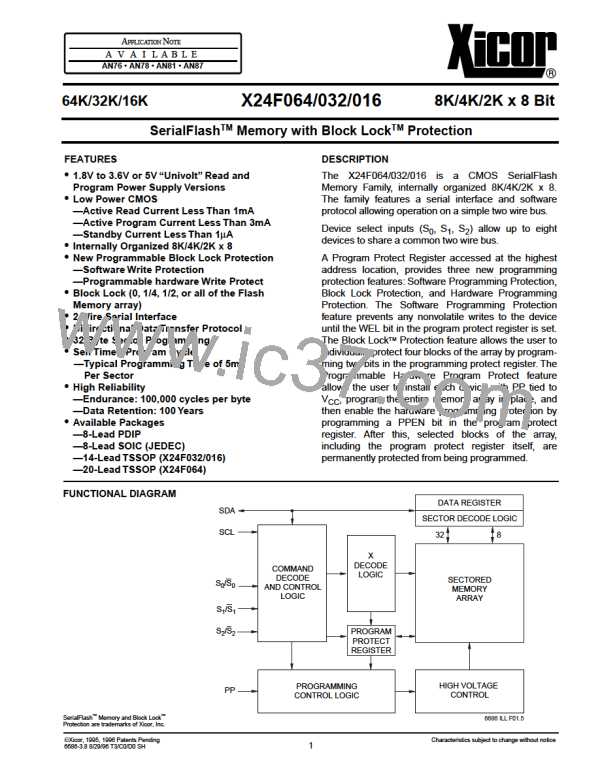X24F064/032/016
Flow 1. ACK Polling Sequence
After the receipt of each byte, the five low order ad-
dress bits are internally incremented by one. The high
order bits of the sector address remain constant. If the
master should transmit more or less than 32 bytes prior
to generating the stop condition, the contents of the
sector cannot be guaranteed. All inputs are disabled
until completion of the internal program cycle. Refer to
Figure 5 for the address, acknowledge and data trans-
fer sequence.
PROGRAM OPERATION
COMPLETED
ENTER ACK POLLING
ISSUE
START
Acknowledge Polling
The Max Write Cycle Time can be significantly reduced
using Acknowledge Polling. To initiate Acknowledge
Polling, the master issues a start condition followed by
the Slave Address Byte for a write or read operation. If
the device is still busy with the high voltage cycle, then
no ACK will be returned. If the device has completed
the write operation, an ACK will be returned and the
host can then proceed with the read or write operation.
Refer to Flow 1.
ISSUE SLAVE
ADDRESS AND R/W = 0
ISSUE STOP
ACK
NO
RETURNED?
YES
READ OPERATIONS
NEXT
NO
Read operations are initiated in the same manner as
program operations with the exception that the R/W bit
of the slave address is set HIGH. There are three basic
read operations: current address read, random read
and sequential read.
OPERATION
A WRITE?
YES
ISSUE SECTOR
ADDRESS
It should be noted that the ninth clock cycle of the read
operation is not a “don’t care.” To terminate a read op-
eration, the master must either issue a stop condition
during the ninth cycle or hold SDA HIGH during the
ninth clock cycle and then issue a stop condition.
ISSUE STOP
PROCEED
PROCEED
6686 ILL F09.1
6

 XICOR [ XICOR INC. ]
XICOR [ XICOR INC. ]